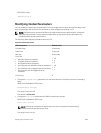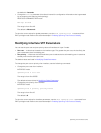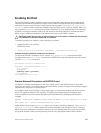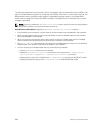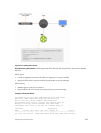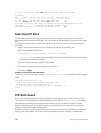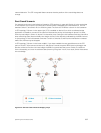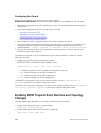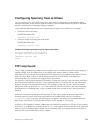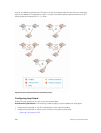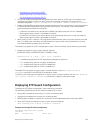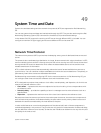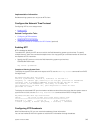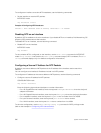
Configuring Spanning Trees as Hitless
You can configure STP, RSTP, MSTP, and PVST+ to be hitless (configure all or none as hitless). When
configured as hitless, critical protocol state information is synchronized between the RPMs so that RPM
failover is seamless and no topology change is triggered.
To be hitless per spanning tree type or for all spanning tree types, use the following commands.
• Configure LACP to be hitless.
CONFIGURATION mode
redundancy protocol lacp
• Configure all spanning tree types to be hitless.
CONFIGURATION mode
redundancy protocol xstp
Example of Configuring all Spanning Tree Types to be Hitless
Dell(conf)#redundancy protocol xstp
Dell#show running-config redundancy
!
redundancy protocol xstp
Dell#
STP Loop Guard
The STP loop guard feature provides protection against Layer 2 forwarding loops (STP loops) caused by a
hardware failure, such as a cable failure or an interface fault. When a cable or interface fails, a
participating STP link may become unidirectional (STP requires links to be bidirectional) and an STP port
does not receive BPDUs. When an STP blocking port does not receive BPDUs, it transitions to a
Forwarding state. This condition can create a loop in the network.
For example, in the following example (STP topology 1, upper left), Switch A is the root switch and Switch
B normally transmits BPDUs to Switch C. The link between Switch C and Switch B is in a Blocking state.
However, if there is a unidirectional link failure (STP topology 1, lower left), Switch C does not receive
BPDUs from Switch B. When the max-age timer expires, the STP port on Switch C becomes unblocked
and transitions to Forwarding state. A loop is created as both Switch A and Switch C transmit traffic to
Switch B.
As shown in the following illustration (STP topology 2, upper right), a loop can also be created if the
forwarding port on Switch B becomes busy and does not forward BPDUs within the configured
forward-delay time. As a result, the blocking port on Switch C transitions to a forwarding state, and
both Switch A and Switch C transmit traffic to Switch B (STP topology 2, lower right).
As shown in STP topology 3 (bottom middle), after you enable loop guard on an STP port or port-channel
on Switch C, if no BPDUs are received and the max-age timer expires, the port transitions from a blocked
state to a Loop-Inconsistent state (instead of to a Forwarding state). Loop guard blocks the STP port so
that no traffic is transmitted and no loop is created.
Spanning Tree Protocol (STP)
909



